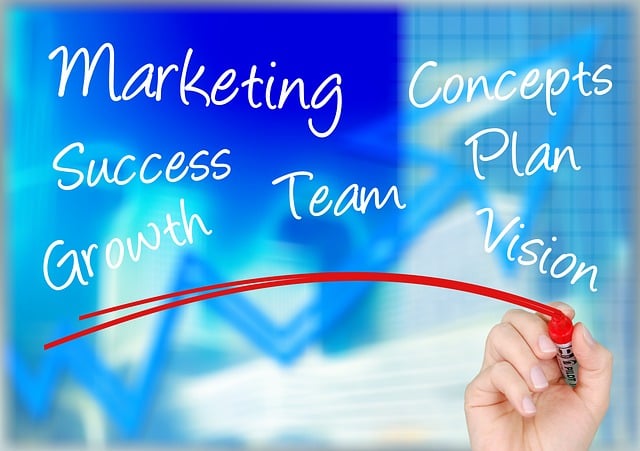Incorporating AI-powered systems into recreational vehicle (RV) repair processes offers significant advantages, including enhanced efficiency, cost reduction, and improved maintenance profitability. These advanced systems leverage machine learning algorithms to predict common RV issues, provide proactive solutions, and implement effective predictive maintenance strategies. Beyond diagnostics, AI optimizes supply chain management, automates routine tasks, and frees up technician time for complex repairs, ensuring essential components are readily available. A strategic guide emphasizes assessing current workflows, selecting appropriate AI tools, controlled pilot testing, comprehensive training, continuous monitoring, and data analysis for successful adoption, ultimately driving higher RV maintenance profitability.
In today’s digital era, AI-powered systems are transforming industries, and the RV (recreational vehicle) repair sector is no exception. This article explores the potential of AI optimization strategies for enhancing RV repair workflows, boosting efficiency, and reducing costs. We provide a comprehensive guide on implementing AI-driven solutions, offering step-by-step insights tailored for RV maintenance teams. Furthermore, we delve into maximizing profitability, highlighting strategies for long-term success within the RV industry through AI integration.
- Understanding the Potential of AI in RV Repair: Unlocking Efficiency and Cost Savings
- Implementing AI-Powered Systems: A Step-by-Step Guide for RV Maintenance Teams
- Maximizing Profitability with AI Optimization: Strategies for Long-Term Success in RV Industry
Understanding the Potential of AI in RV Repair: Unlocking Efficiency and Cost Savings

In the realm of recreational vehicle (RV) repair, embracing AI optimization strategies can be a game-changer. AI-powered systems have the potential to revolutionize workflows, enhancing efficiency and significantly reducing costs. By leveraging machine learning algorithms, these systems can analyze vast amounts of data from previous repairs, parts inventory, and customer histories to predict common issues and suggest proactive solutions. This predictive maintenance approach not only saves time but also minimizes unexpected breakdowns, which is crucial for maintaining RVs in top condition.
The benefits extend beyond diagnostics. AI can optimize supply chain management by forecasting part requirements based on historical usage and seasonal trends, ensuring that essential components are readily available when needed. Furthermore, automation of routine tasks such as scheduling appointments, managing customer communications, and generating estimates can free up valuable time for technicians, allowing them to focus on more complex repairs and enhancing overall RV maintenance profitability.
Implementing AI-Powered Systems: A Step-by-Step Guide for RV Maintenance Teams

Implementing AI-Powered Systems: A Practical Guide for RV Maintenance Teams
1. Assess Current Workflows: Begin by thoroughly understanding your RV maintenance team’s existing processes. Identify pain points and inefficiencies that could be streamlined with AI technology. This step is crucial as it ensures the right tools are adopted to address specific needs, enhancing overall RV repair profitability.
2. Select Appropriate AI Tools: With a clear picture of your workflows, research and choose AI-powered systems tailored for RV maintenance tasks. These could include predictive analytics for parts inventory management, computer vision for damage assessment, or automated scheduling and communication tools. Integrating the right AI solutions can significantly boost efficiency and reduce costs.
3. Pilot Testing: Implement these AI systems in a controlled environment first. A pilot test allows your team to familiarize themselves with the technology and provides an opportunity to gather feedback. This iterative process ensures any issues are addressed before full-scale rollout, minimizing disruptions to RV maintenance operations.
4. Training and Adoption: Ensure adequate training for all team members to maximize AI system adoption. Educate them on how these tools work, their benefits, and the specific ways they can improve their daily tasks. Encouraging open dialogue and addressing any concerns will foster a positive transition and ensure your team leverages AI effectively.
5. Monitor and Iterate: After implementation, closely monitor the performance of AI-powered systems. Collect data, analyze outcomes, and make adjustments as needed. Continuous improvement is key to maximizing ROI on AI investments, ultimately driving higher RV maintenance profitability.
Maximizing Profitability with AI Optimization: Strategies for Long-Term Success in RV Industry

In today’s digital era, the RV industry is witnessing a significant transformation with the integration of AI-powered systems into repair workflows. These advanced technologies offer more than just efficiency; they are game-changers for maximizing profitability in RV maintenance. By leveraging machine learning algorithms and data analytics, repair shops can optimize their processes, reduce costs, and enhance overall productivity.
AI optimization strategies enable accurate predictive maintenance, where systems can anticipate component failures before they occur, minimizing downtime. Automated diagnostics and remote support also streamline the initial assessment stage, allowing technicians to focus on more complex repairs. Additionally, AI-driven inventory management ensures that parts are ordered promptly, reducing storage costs and enhancing supply chain efficiency. These long-term strategies not only boost profitability but also foster a competitive edge in the RV repair market, setting businesses up for sustained success.
AI optimization strategies have the potential to revolutionize RV repair workflows, enhancing efficiency and cost savings. By implementing AI-powered systems, RV maintenance teams can streamline processes, improve accuracy, and reduce downtime. This not only maximizes profitability but also ensures a competitive edge in the industry. Adopting these strategies today can lead to long-term success, allowing businesses to thrive in an increasingly digital and demanding market.
